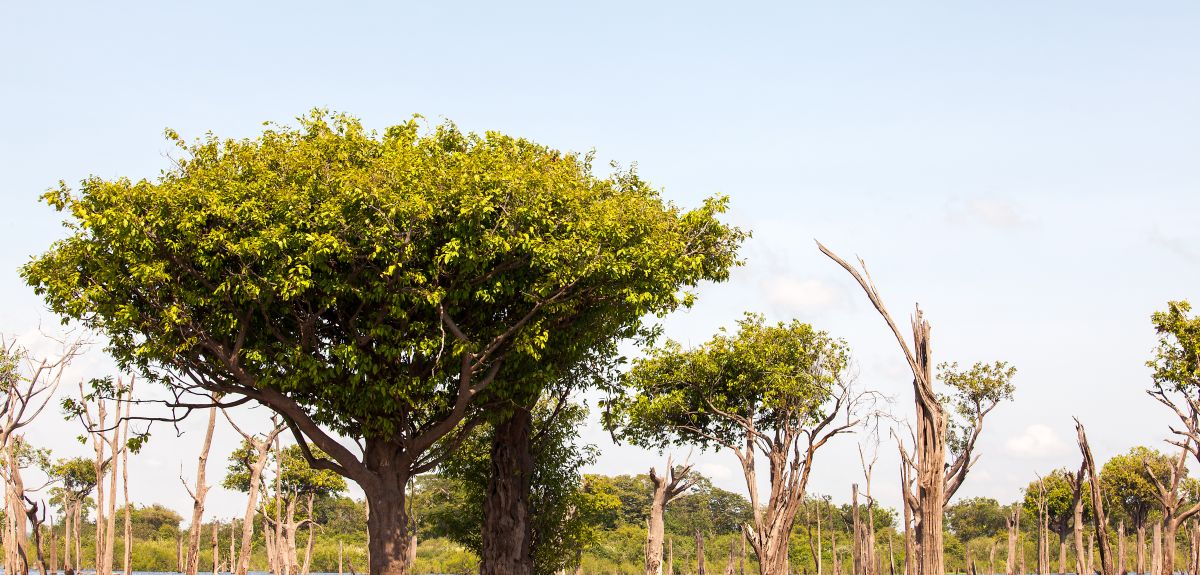
Image credit: Shutterstock
Study identifies global ecosystems most sensitive to changes in climate
Researchers from the University of Oxford, the Royal Botanic Gardens, Kew and the University of Bergen have published a new study taking the first step towards addressing why some regions are more sensitive than others to the impact of changes in climate.
The report identifies vital ecologically sensitive areas for ecosystem provision and poverty alleviation. The identification of properties that contribute to the persistence and resilience of ecosystems despite climate change constitutes a research priority of global relevance. It is therefore essential to identify those regions that are most sensitive to these changes
A novel and empirical approach to assess the relative sensitivity of ecosystems to climate changes has been taken in this study using a newly designed metric. The metric is called the Vegetation Sensitivity Index (VSI) and measures the sensitivity of vegetation to air temperature, water availability and cloud cover, and has been used to characterise ecosystems and their response to changes in climate over the past 14 years. This indexing method has allowed experts to quantify, for the first time, which aspects of the climate drive responses in the different regions and establish whether past climate patterns affect the present-day responses.
Alistair Seddon, Researcher at the Department of Biology, University of Bergen, said: 'Metrics like VSI represent one critical component of understanding how ecosystems respond to environmental variability. Now the challenge is to understand what the ecological mechanisms behind these patterns.'
Marc Macias-Fauria, NERC IRF and Associate Professor at the School of Geography and the Environment, University of Oxford, said: 'Satellite data have revolutionised research in ecology because they can provide a global picture on both climate and ecosystem conditions, even in remote areas. It's up to the ecologists to think creatively about how to use these datasets in new and unique ways.'
Through the use of the VSI, seven ecosystems have been identified that show increased sensitivity to variability in climate: the arctic tundra, parts of the boreal forest (a vast ring of forest just below the arctic circle), the tropical rainforest, alpine regions worldwide, steppe and prairie regions of central Asia and the Americas, the Caatinga deciduous forest in Eastern South America, and Eastern areas of Australia.
Co-author Kathy Willis, Director of Science at the Royal Botanic Gardens, Kew and Professor of Biodiversity at Oxford, said: 'In The UK's natural capital report that was launched in October 2015, one of the key take-home messages was the urgent need to determine a methodology to identify the most vulnerable natural capital stocks – not just in the UK but globally. This work represents the first step in developing such a methodology and providing a quantitative and reproducible methodology to identify those regions of the world that are most or less vulnerable to climatic perturbations now and in the future.'
The environmental and human-enforced changes of the 21st century will increase the pressures on biodiversity and key ecosystem services, including carbon storage, water and nutrient cycling, flood defence, fuel, food, medicine, building materials and textiles. The ability for vegetation to tolerate climate variability is the key component we need to understand to prioritise areas that can keep providing these ecosystem services in the future.
The study 'Sensitivity of global terrestrial ecosystems to climate variability' is published in the journal Nature.
 Oxford launches first human aerosol TB challenge trial
Oxford launches first human aerosol TB challenge trial
 Rees Centre report reveals challenges faced by Black and Asian kinship carers
Rees Centre report reveals challenges faced by Black and Asian kinship carers
 Expert Comment: The Modern Slavery Act at 10 – what have we learnt for human rights?
Expert Comment: The Modern Slavery Act at 10 – what have we learnt for human rights?